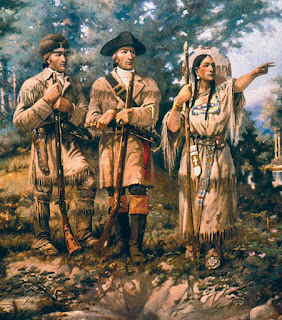The Heart of Exploration: Sacagawea's Journey with Lewis and Clark
In the tapestry of American history, few figures shine as vividly and stirringly as Sacagawea, the Lemhi Shoshone woman whose youthful spirit and indomitable courage played a pivotal role in one of the most daring exploratory ventures of early America: the Lewis and Clark Expedition. Born under Idaho's vast, open skies around 1788, Sacagawea's life was to take a path as winding and unpredictable as the rivers that the expedition she joined would navigate.
The saga of Sacagawea is not just a tale of exploration; it's a story of resilience. Captured by an enemy tribe and eventually wedded to Toussaint Charbonneau, a French-Canadian trapper, Sacagawea's life took a fateful turn when she and Charbonneau were recruited to join Meriwether Lewis and William Clark on their expedition to chart the newly acquired Louisiana Territory. Little did anyone know, this teenage girl, carrying her newborn son, Jean Baptiste, on her back, would become a linchpin in achieving the expedition's grand ambitions.
Sacagawea's contributions to the expedition were manifold and monumental. With her intimate knowledge of the land and its languages, she bridged the worlds between the explorers and the Native American tribes they encountered, often ensuring peaceful exchanges and vital support. One cannot underestimate the significance of her role in procuring horses from the Shoshone tribe—horses crucial for the Rocky Mountains' treacherous crossing.
Her presence was a beacon of peace; a woman and mother amongst a corps of soldiers and frontiersmen signaled benign intentions to the tribes they met along the way. This soft diplomacy eased the expedition's passage through territories where the welcome could have been hostile.
Moreover, Sacagawea's keen observation and knowledge of natural history enriched the expedition's records with insights into flora and fauna previously unknown to American science. Each plant she pointed out, every navigational path she recommended, wove her deeper into the fabric of this monumental journey.
But Sacagawea's story transcends the mere facts of her contributions. It is imbued with the colors of courage, the resilience of the human spirit, and the profound impact one individual can have on the course of history. Carrying her son over mountains and across rivers, she embodied the expedition's spirit of discovery and its relentless quest for knowledge. Her story is a testament to the vital role of women in exploration and the bridging of cultures.
The exact date of Sacagawea's death remains a subject of historical debate, with records suggesting she passed away in 1812 or lived until 1884. Regardless, her legacy endures, immortalized not just in the journals of Lewis and Clark but in the mountains, rivers, and valleys that bear her name and in the countless stories and monuments that honor her memory.
Sacagawea's journey with Lewis and Clark is a vivid chapter in the American narrative, reminding us that history is often shaped by those who, though seemingly in the background, are instrumental in guiding the course of events. Her life, a blend of adventure, hardship, and triumph, continues to inspire with its message of resilience and the power of understanding and cooperation across cultures.


Comments
Post a Comment